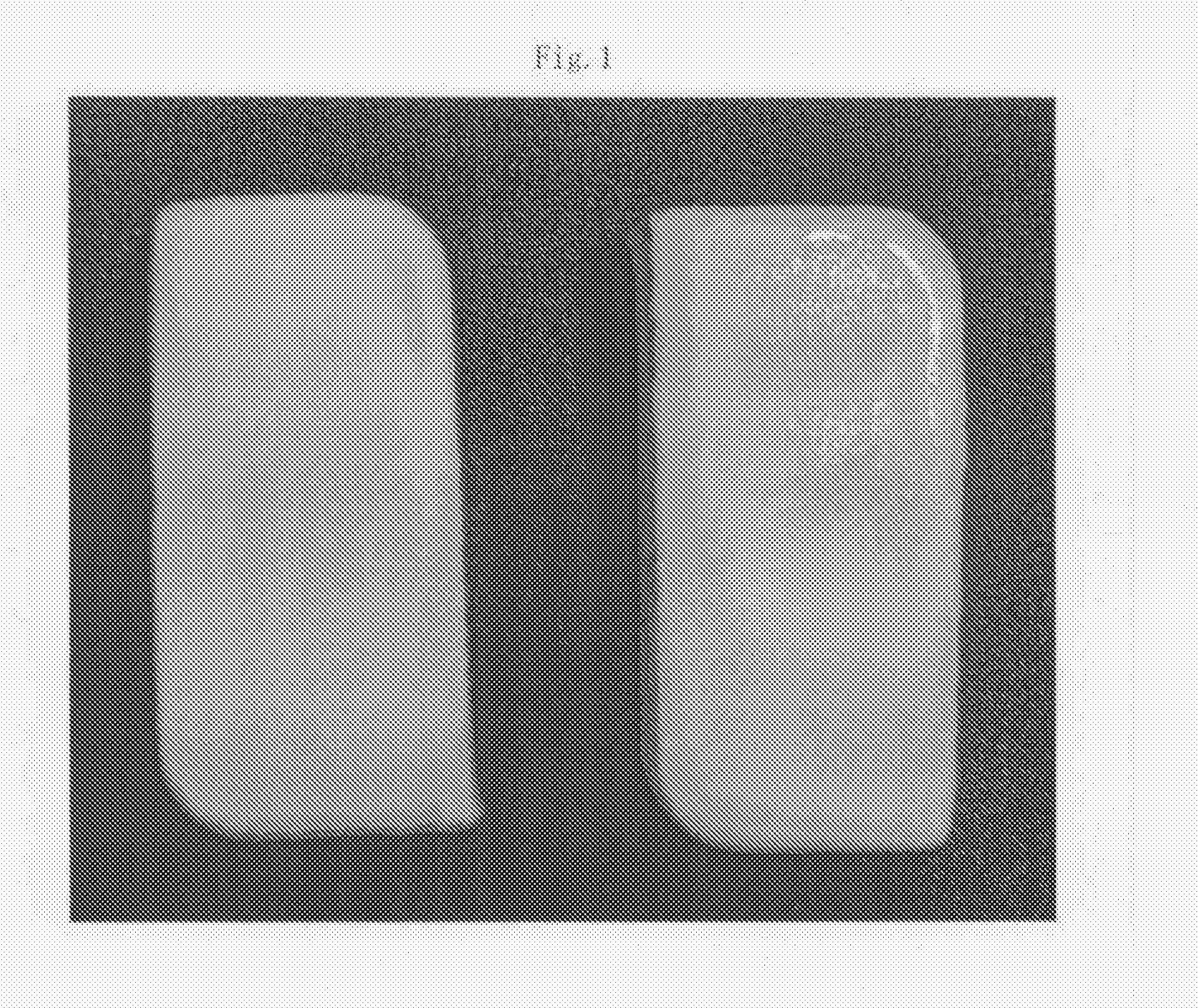Optical glass
a technology of optical glass and glass, applied in the field of optical glass, can solve the problems of deficiency of tantalum supply, rare metal price soaring worldwide, and very expensive substance, and achieve excellent glass stability, maintain devitrification resistance, and supply stable
- Summary
- Abstract
- Description
- Claims
- Application Information
AI Technical Summary
Benefits of technology
Problems solved by technology
Method used
Image
Examples
example 1
[0123]Carbonates, nitrates, hydroxides, oxides, boric acid, etc., were used as raw materials, and powders of the raw materials were weighed and fully mixed to obtain formulated raw materials for obtaining glasses Nos. 1 to 10 having compositions shown in Table 1. The formulated raw materials were placed in platinum crucibles and heated at 1,400° C. to melt them, and the molten glasses were refined and stirred to obtain homogeneous molten glasses. These molten glasses were cast into pre-heated molds and rapidly cooled, and they were maintained at temperatures around their glass transition temperatures for 2 hours and then gradually cooled to give optical glasses named glass Nos. 1 to 10. No crystal precipitation was found in any of the glasses.
[0124]The glasses were measured for properties by methods shown below. Table 2 shows the measurement results.
(1) Refractive Index nd and Abbe's Number vd
[0125]An optical glass obtained by gradual cooling at a rate of 30° C / hour was measured.
(2)...
example 2
[0132]Press-molding glass gobs formed of the optical glasses Nos. 1 to 10 in Example 1 were produced in the following manner.
[0133]First, glass raw materials were prepared so as to obtain the above glasses, and they were placed in platinum crucibles, melted under heat, refined and stirred to give homogeneous molten glasses. Each molten glass was caused to flow out of a flow pipe at a constant flow rate and cast into a mold that was horizontally arranged below the flow pipe to form glass plates having a constant thickness. Each of the thus-formed glass plates was continuously withdrawn in the horizontal direction through an opening portion provided on a side surface of the mold, carried into an annealing furnace with a belt conveyor and gradually cooled.
[0134]The gradually cooled glass plates were cut or split to make glass pieces and these glass pieces were barrel-polished to obtain press-molding glass gobs.
[0135]In addition, press-molding glass gobs can be also obtained by arrangin...
example 3
[0136]A molten glass was caused to flow out of a flow pipe in the same manner as in Example 2, and a lower end of the molten glass that was flowing out was received with a shaping mold. Then, the shaping mold was rapidly moved downward to cut the molten glass flow on the basis of a surface tension, to obtain a molten glass mass having a predetermined weight on the shaping mold. And, gas was ejected from the shaping mold to apply a gas pressure upwardly to the glass, the glass was shaped into a glass mass while it was floated, and the glass mass was taken out of the shaping mold and annealed. The glass mass was barrel-polished. In this manner, press-molding glass gobs formed of the same glasses as those in Example 2 were obtained.
PUM
| Property | Measurement | Unit |
|---|---|---|
| mass % | aaaaa | aaaaa |
| refractive index nd | aaaaa | aaaaa |
| refractive index nd | aaaaa | aaaaa |
Abstract
Description
Claims
Application Information
 Login to View More
Login to View More - R&D
- Intellectual Property
- Life Sciences
- Materials
- Tech Scout
- Unparalleled Data Quality
- Higher Quality Content
- 60% Fewer Hallucinations
Browse by: Latest US Patents, China's latest patents, Technical Efficacy Thesaurus, Application Domain, Technology Topic, Popular Technical Reports.
© 2025 PatSnap. All rights reserved.Legal|Privacy policy|Modern Slavery Act Transparency Statement|Sitemap|About US| Contact US: help@patsnap.com

